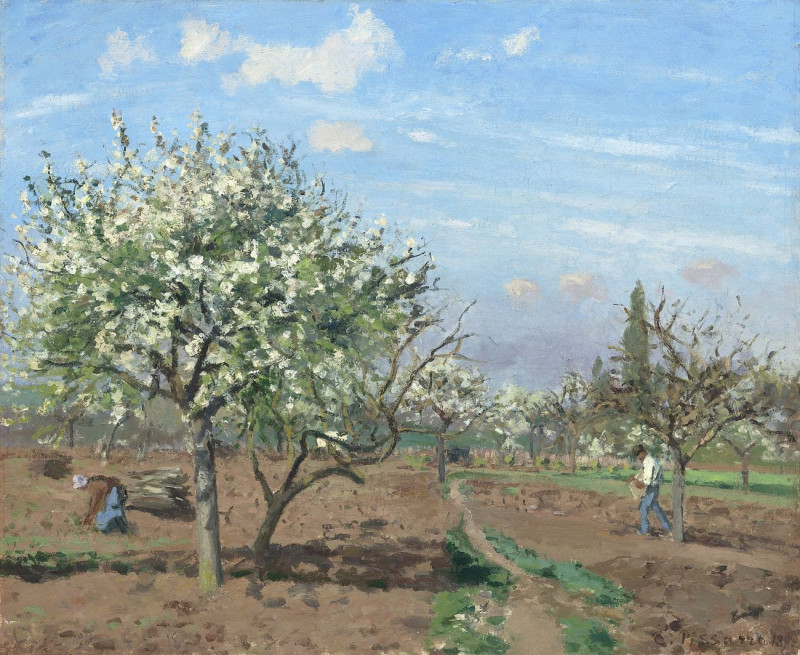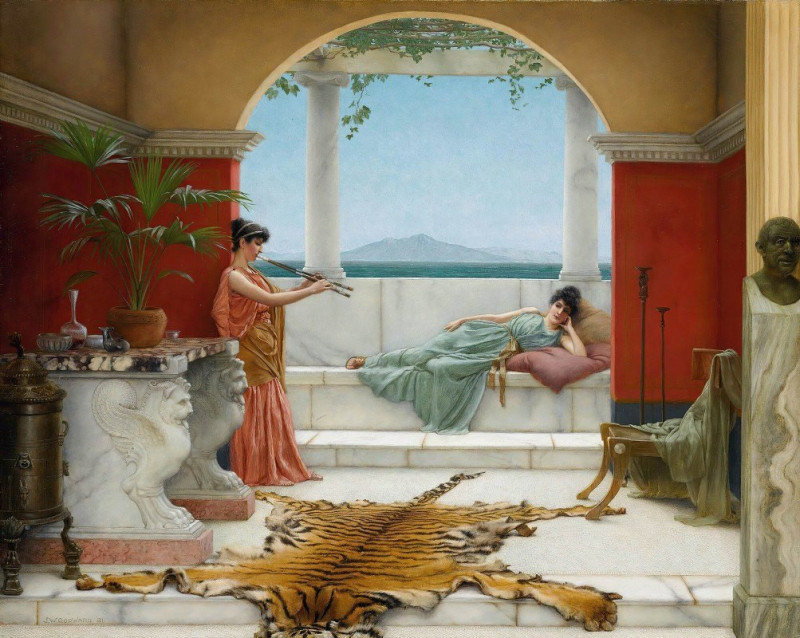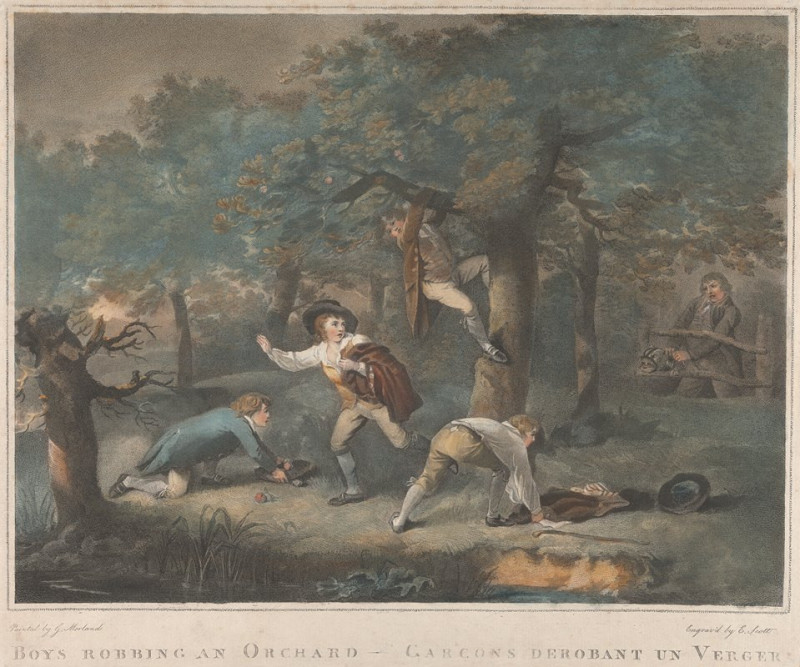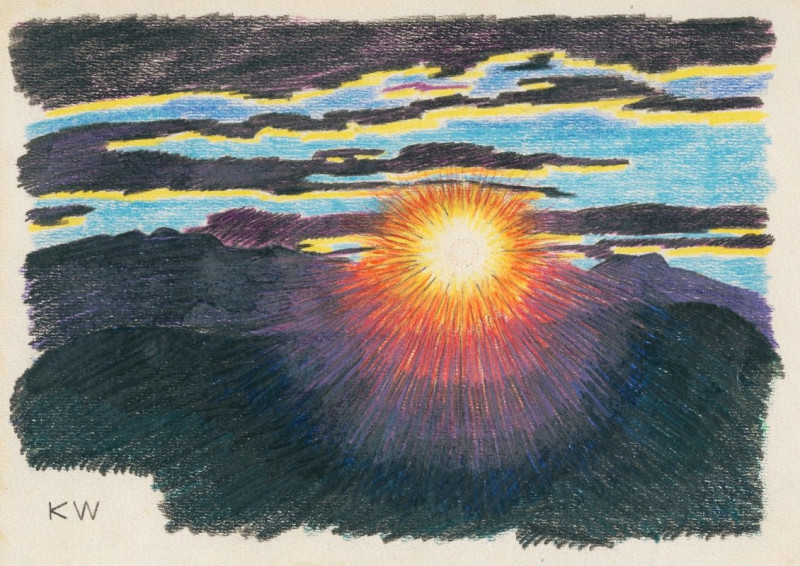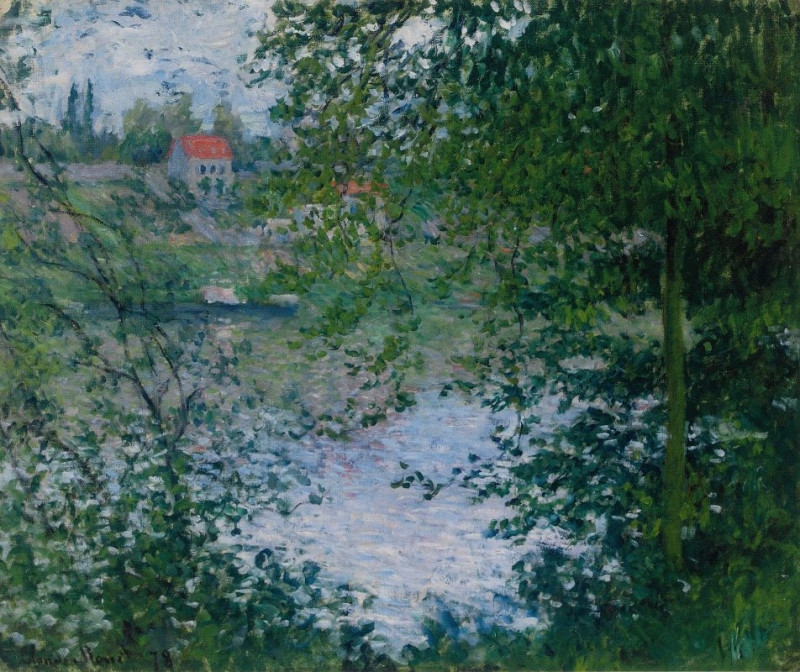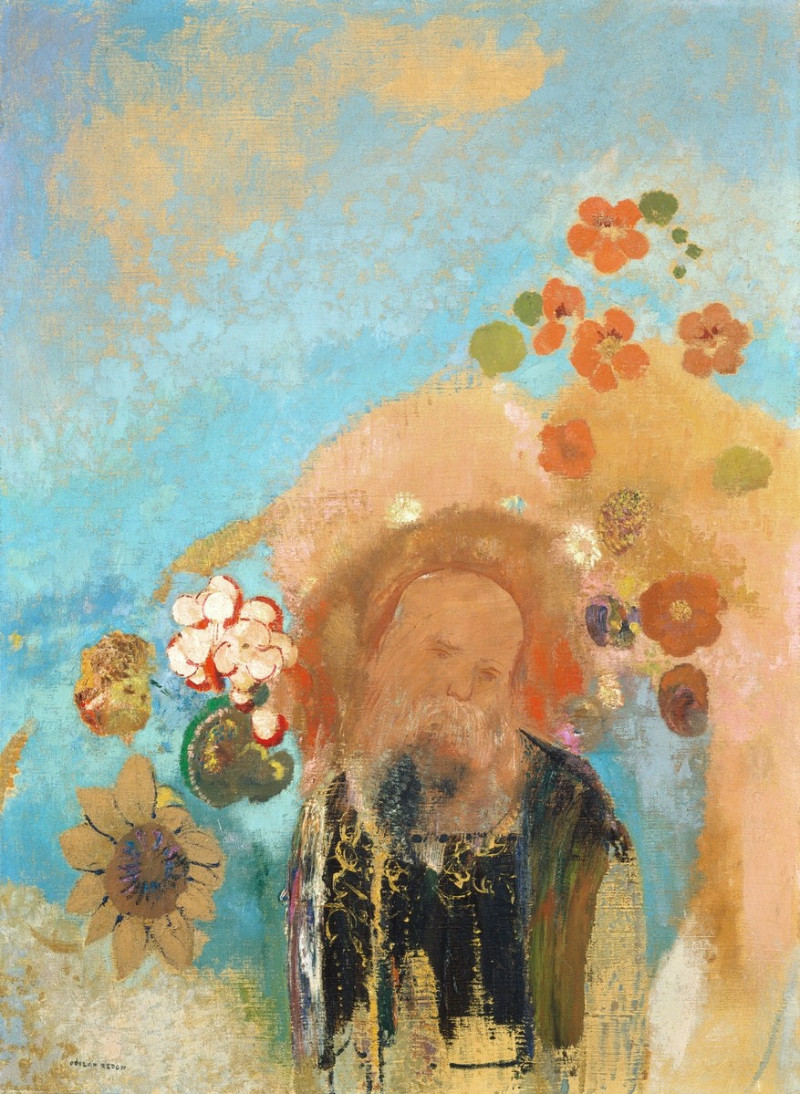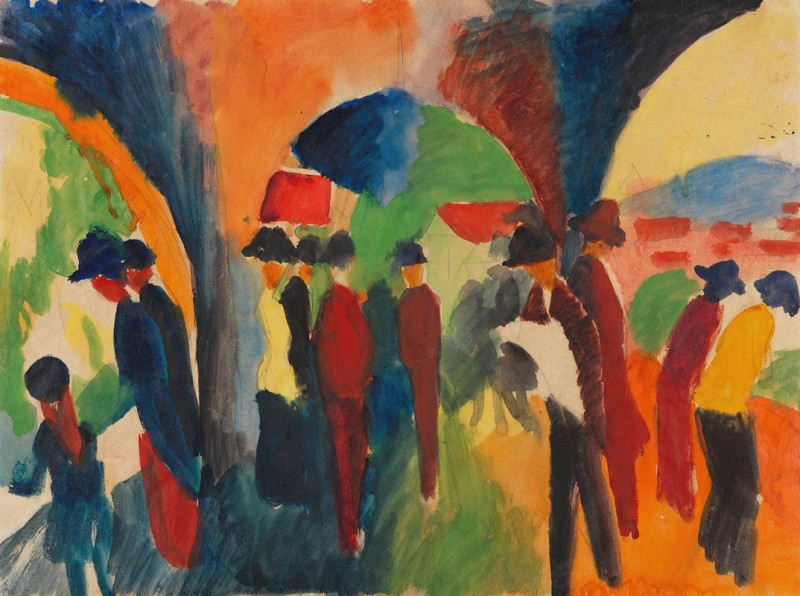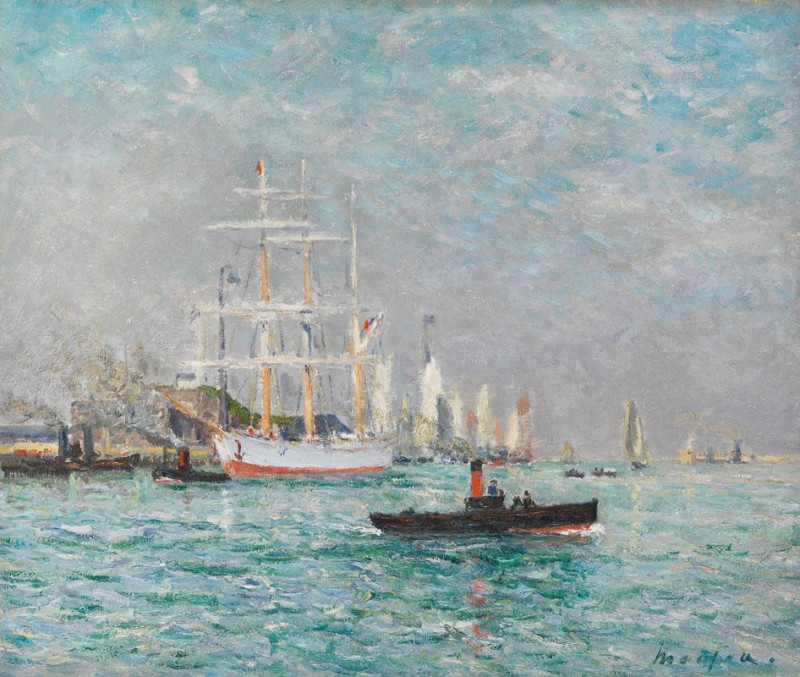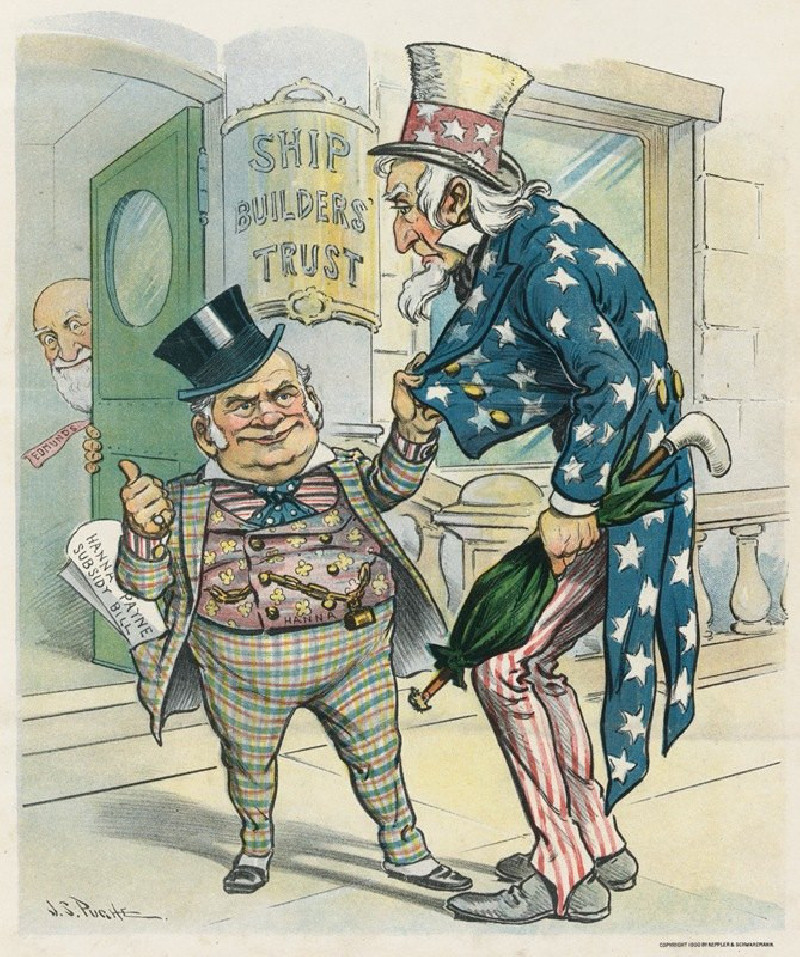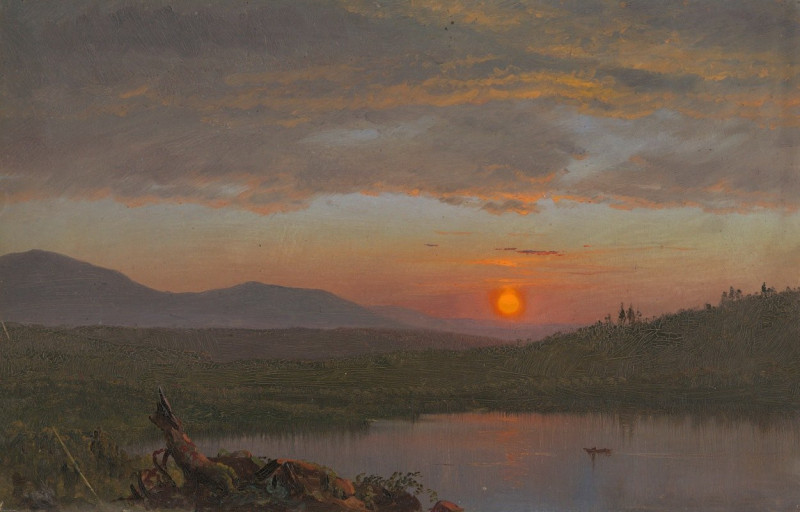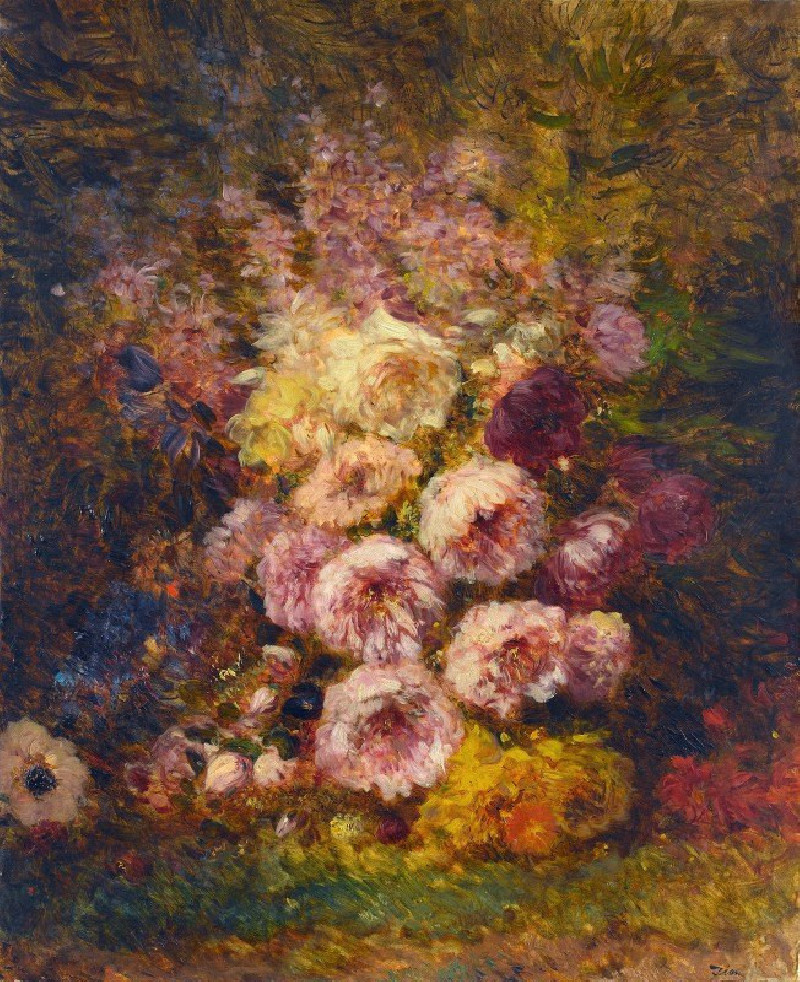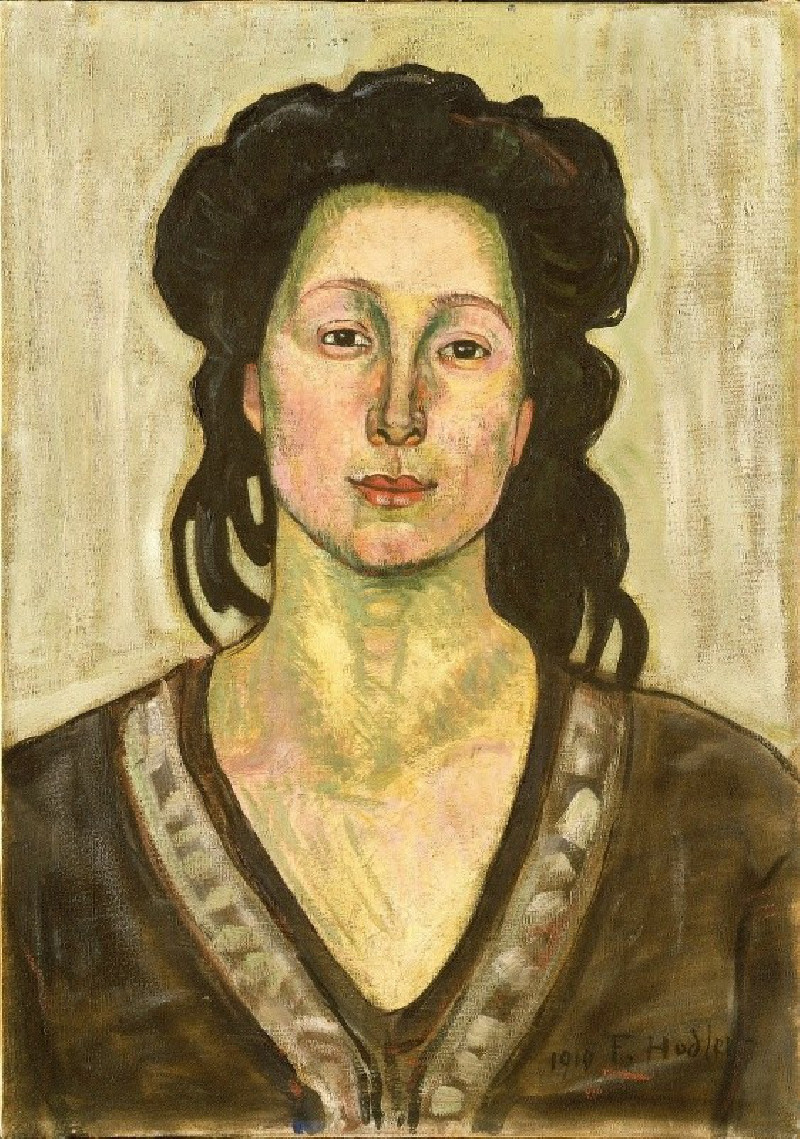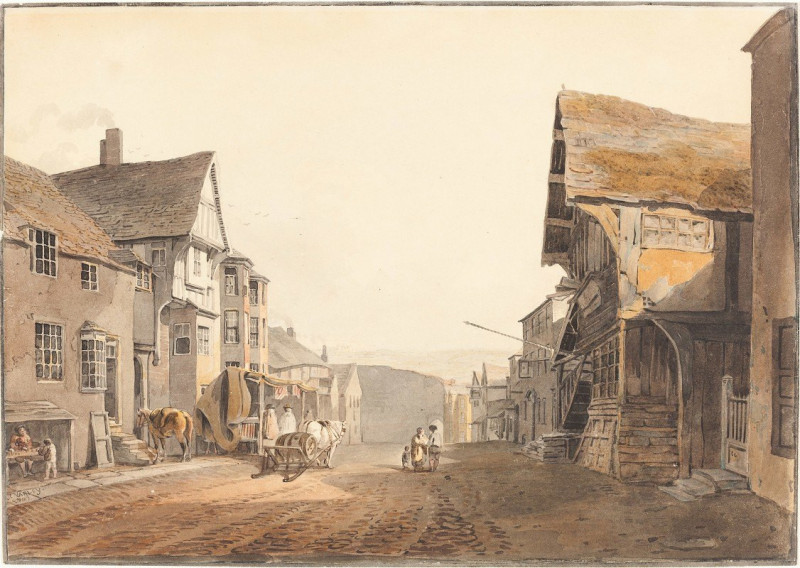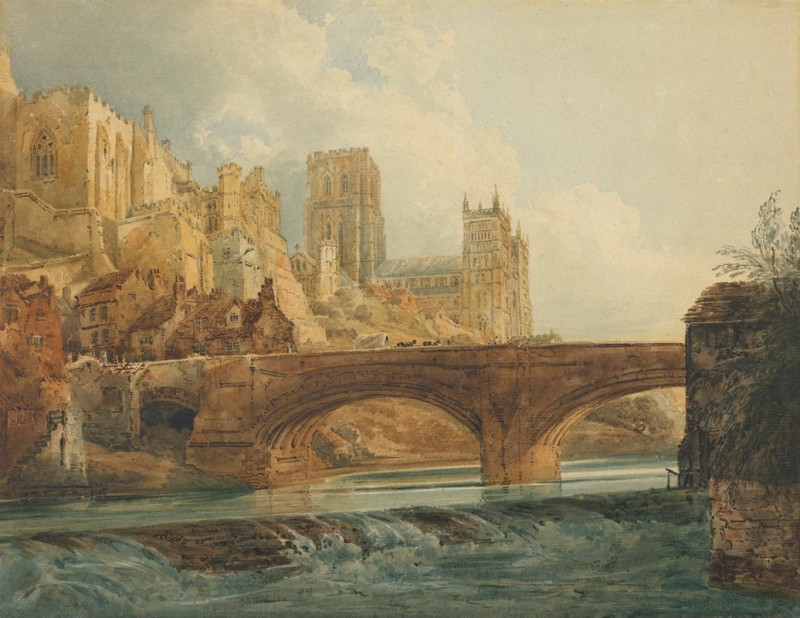Orchard In Bloom, Louveciennes
Technique: Giclée quality print
Recommended by our customers
More about this artwork
This painting, "Orchard in Bloom, Louveciennes" by Camille Pissarro, depicts a serene and picturesque landscape scene typical of Pissarro's work that focuses on rural life and natural settings. The scene captures an orchard in the small village of Louveciennes during spring, as evidenced by the blooming trees filled with white blossoms that create a vibrant contrast against the soft blue sky speckled with gentle, fluffy clouds.In the foreground, there are two figures engaged in what appears to be agricultural work. On the left, one figure is bent over, possibly weeding or planting, close to the burgeoning tree. To the right, another figure stands upright, potentially surveying the field or scattering seeds. The earth around them is rich and dark, suggesting recently tilled soil ready for the season’s planting.The beauty of this painting lies not just in its depiction of the pastoral duties but also in its play of light and the delicate rendering of the trees and sky. Pissarro's brushwork gives texture to the foliage and the blossoms, capturing the fleeting beauty of spring in a way that feels both tranquil and alive. The composition, with trees at varying distances and the figures subtly integrated into the landscape, draws the viewer’s eye deeply into the scene, making us feel as if we are part of this peaceful, everyday moment in the countryside.
Delivery
Returns
Blessed are they who see beautiful things in humble places where other people see nothing. — Camille Pissarro
Camille Pissarro (1830-1903) was born on St.Thomas (now the US Virgin Islands) to a Portuguese father and a Dominican mother. He went to Paris to study art at Ecole des Beaux-Arts. He was an early pioneer of pointillism and neo-impressionism and later became a mentor of many famous impressionist painters including Cezanne, Manet, Renoir, and Gauguin. His paintings depicted rural and urban French landscapes and lifestyle. Many of his works politically captured images of peasants and laborers. Today, he is considered the father of impressionism.

